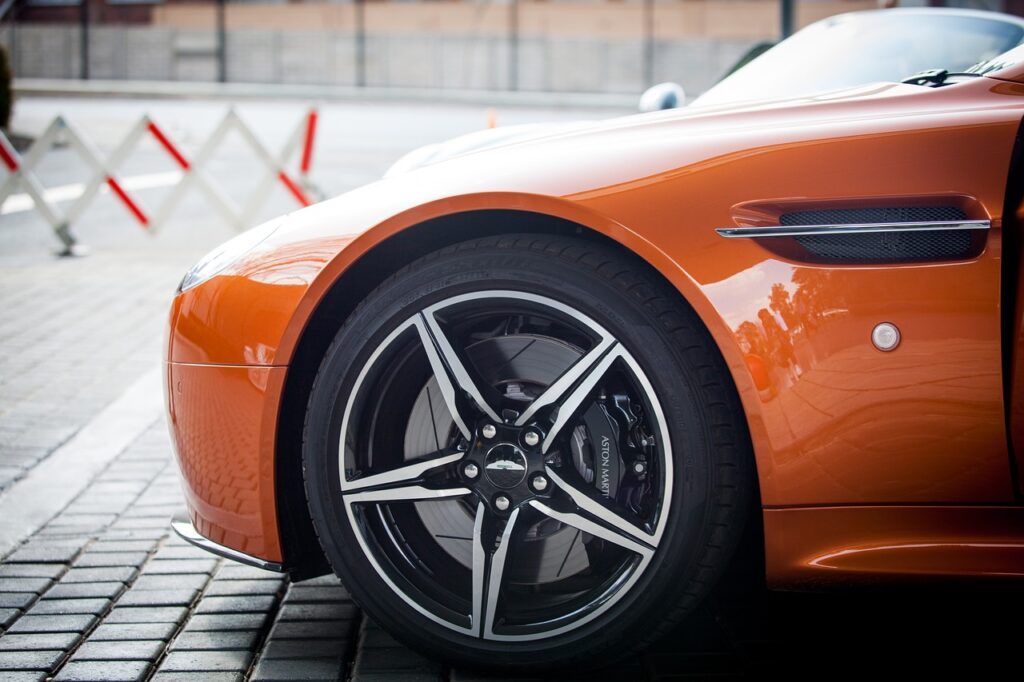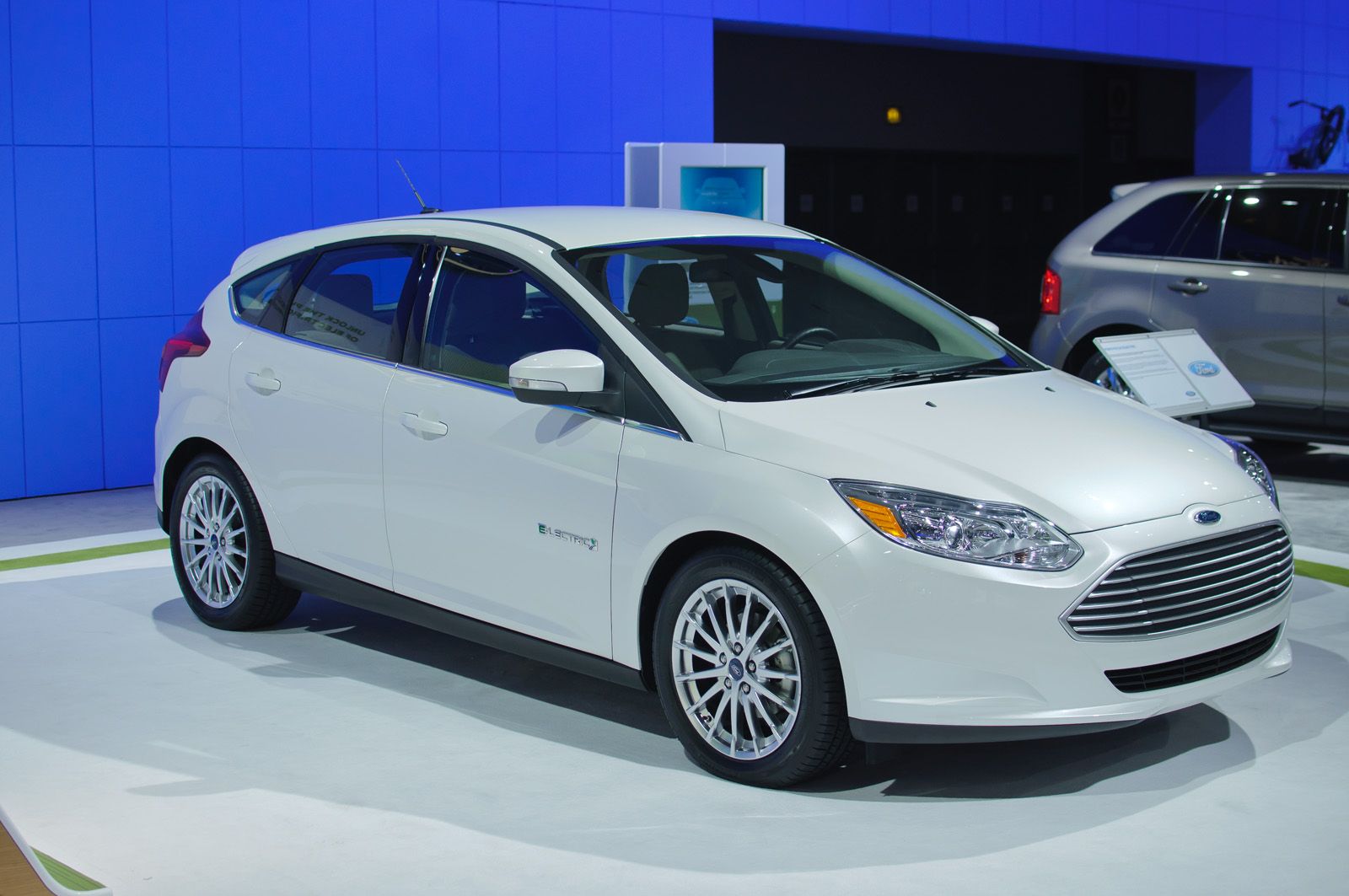
Car owners have diverse needs and preferences when it comes to their vehicles. While many drivers primarily view their cars as simple tools for transportation, moving them from point A to point B with minimal hassle, a distinct and passionate group of car enthusiasts often finds immense satisfaction in the maintenance process itself. They cherish hands-on tasks like oil changes and repairs, valuing direct accessibility to vehicle components.
This deep appreciation for tinkering often shapes their automotive choices, leading them to seek out specific vehicles designed for ease of repair and personal involvement. This unique mindset explains why highly automated, low-maintenance electric cars, such as the Tesla Model X or Polestar 2, don’t always resonate with this group. Instead, DIY mechanics are drawn to vehicles that offer reliable performance while still inviting them to pop the hood and get their hands dirty, fostering a sense of empowerment.
For those who dream of turning wrenches without feeling overwhelmed, a select group of cars stands out. This comprehensive guide highlights vehicles that are ideal for at-home maintenance, expertly combining inherent reliability, design simplicity, and an inviting layout under the hood that genuinely welcomes investigation. These are the machines ready to transform even the most nervous newbie into a confident gearhead, making every repair a rewarding learning experience.
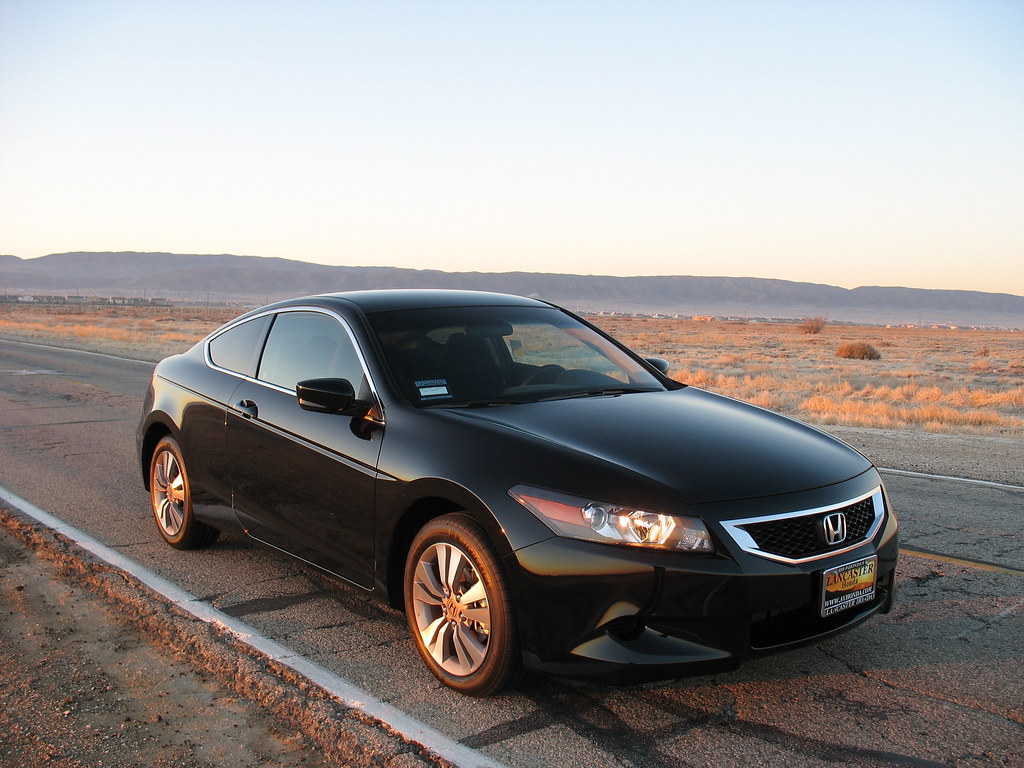
1. **Honda Accord: Simplicity Meets Reliability**
The Honda Accord stands as a prime example of a user-friendly car perfectly suited for driveway mechanics. It has long been known for its robust reliability, a trait especially pronounced in its four-cylinder models. This enduring reputation makes it a trustworthy choice for anyone looking to undertake their own vehicle care and repairs, offering peace of mind alongside practicality.
One of the Accord’s most appealing features is the ample access it provides to critical components, such as oil filters and spark plugs. This thoughtful engineering means less struggling and more straightforward execution of routine maintenance tasks. The i4 engines, with their inherently fewer moving parts compared to V6 configurations, are significantly more straightforward to work on, simplifying diagnosis and repair for the home mechanic.
While some specific model years, like the 2003, are noted for transmission issues, the more recent 2019–2024 models are generally highlighted for their dependable nature. This consistent quality means owners can trust in the longevity of their vehicle and the simplicity of its upkeep. Furthermore, with over 160,000 units sold in 2024 alone, the availability of parts for the Accord is excellent, ensuring that replacements are easy to find and often affordable.
The Honda Accord truly embodies a reliable favorite, expertly balancing quality, inherent simplicity, and solid performance. For individuals who genuinely enjoy engaging in their own car maintenance, it offers a practical and rewarding experience, making it a cornerstone for DIY automotive care. It’s a vehicle that encourages learning and hands-on involvement, fostering a sense of accomplishment with every task completed.
Car Model Information: 2020 Honda Accord Sport 1.5T
Name: Honda Accord
Caption: 2023 Honda Accord LX (US)
Alt: Front three-quarter view of a front-engined four-door car.
Manufacturer: Honda
Production: 1976–present
Class: Compact car
BodyStyle: hatchback
Layout: Front-engine, front-wheel-drive layout
Predecessor: Honda 1300
Categories: 1980s cars, 1990s cars, 2000s cars, 2010s cars, 2020s cars
Summary: The Honda Accord (Japanese: ホンダ・アコード, Hepburn: Honda Akōdo; ), also known as the Honda Inspire (Japanese: ホンダ・インスパイア, Hepburn: Honda Insupaia) in Japan and China for certain generations, is a series of automobiles manufactured by Honda since 1976, best known for its four-door sedan variant, which has been one of the best-selling cars in the United States since 1989. The Accord nameplate has been applied to a variety of vehicles worldwide, including coupes, station wagons, hatchbacks and a Honda Crosstour crossover.
Get more information about: Honda Accord
Buying a high-performing used car >>>
Brand: Honda Model: Accord
Price: $21,761 Mileage: 76,820 mi.
Read more about: The Ultimate Guide: 14 Cars Proven to Surpass 300,000 Miles Without Major Repairs

2. **Subaru Forester: Roomy Yet Quirky Maintenance**
The Subaru Forester rightfully earns its esteemed position on this list, thanks to a combination of a well-thought-out engine bay and its reputation for solid reliability. Despite these advantages, its distinctive boxer engine design might present a slight learning curve for those unfamiliar with its horizontally opposed layout, requiring a different approach to certain tasks.
Owners of specific model years, notably 2013 and the more recent 2021–2024 iterations, typically report a relatively easy maintenance experience. However, it is crucial for potential DIYers to exercise caution and avoid the problematic 2014 version, which was notably plagued by issues of oil consumption and, in some cases, engine failure, making it a less ideal choice for trouble-free home maintenance.
While the unique engine layout can make tasks like spark plug changes somewhat frustrating due to limited access, the Forester generally presents itself as a highly practical choice for the DIY enthusiast. Its naturally aspirated engines contribute to its overall simplicity, reducing the complexity often found in turbocharged counterparts, and its decent ground clearance further aids in under-vehicle work, making some tasks more manageable without a lift.
The Forester is a great candidate for DIYers who are prepared to familiarize themselves with the unique quirks of Subaru’s design philosophy. This willingness to understand its particularities transforms what might be seen as challenges into rewarding learning opportunities, solidifying its place as a vehicle that can truly empower home mechanics who embrace its distinctive engineering and robust capabilities.
Car Model Information: 2015 Subaru Forester 2.5i
Name: Subaru Forester
Manufacturer: Subaru
Production: 1997–present
Class: Compact crossover SUV
BodyStyle: SUV
Related: Subaru Impreza
Layout: Front-engine, all-wheel drive
Predecessor: Subaru Bighorn
Categories: 2000s cars, 2010s cars, All-wheel-drive vehicles, All Wikipedia articles written in American English, All articles containing potentially dated statements
Summary: The Subaru Forester (Japanese: スバル・フォレスター, Hepburn: Subaru Foresutā) is a compact crossover SUV that has been manufactured by Subaru since 1997. The first generation was built on the platform of the Impreza in the style of a taller station wagon, a style that continued to the second generation, while the third-generation model onwards moved towards a crossover SUV design. A performance model was available for the second-generation Forester in Japan as the Forester STi.
Get more information about: Subaru Forester
Buying a high-performing used car >>>
Brand: Subaru Model: Forester
Price: $9,750 Mileage: 124,061 mi.

3. **Mazda 3: Budget-Friendly and Beginner-Ready**
The Mazda 3 offers one of the most accessible entry points into the rewarding world of at-home vehicle maintenance, making it an ideal choice for burgeoning mechanics. Its design is refreshingly straightforward, characterized by reliable Japanese engineering that prioritizes durability and ease of service. This inherent simplicity is a major asset for those taking their first steps in automotive care, reducing initial intimidation.
Models from specific periods, including 2011–2013 and the more recent 2015–2024, are particularly renowned for their inherent durability and the simplicity with which they can be serviced. These generations benefit from a design philosophy that minimizes complexity, allowing for a more direct approach to common repairs and maintenance, which builds confidence in new DIYers.
Most routine tasks on the Mazda 3, ranging from fundamental oil changes to the simple swapping of air filters, are designed to be easy enough for even absolute beginners to confidently undertake. This approachable nature helps new DIYers build confidence without feeling overwhelmed. The primary drawback to consider is its relatively low ground clearance, especially noticeable in newer hatchback models, which might complicate under-vehicle work without the aid of a jack or lift, requiring a bit more preparation.
Despite this minor consideration, the Mazda 3 remains a forgiving and highly cost-effective option for aspiring gearheads eager to get comfortable with car maintenance. It presents a gentle learning curve and won’t overwhelm new hands, establishing itself as a perfect “classroom” on wheels for those starting their journey into automotive DIY and looking for a reliable, no-frills experience.
Car Model Information: 2023 Mazda CX-9 Touring
Name: Mazda3
Manufacturer: Mazda
Aka: Mazda Axela (Japan and China, 2003–2019)
Production: 2003–present
Class: Compact car
BodyStyle: Sedan (automobile),hatchback
Layout: Front-engine, front-wheel-drive layout,Front-engine, four-wheel-drive layout
Predecessor: Mazda Familia
Categories: 2010s cars, 2020s cars, All Wikipedia articles written in American English, All articles needing rewrite, All articles with dead external links
Summary: The Mazda3 is a compact car manufactured by Mazda since 2003 over four generations. The body styles have been a 5-door hatchback and 4-door sedan across all generations. It was sold as the Mazda Axela (Japanese: マツダ・アクセラ, Hepburn: Matsuda Akusera) in China and Japan until 2019.
The first generation was produced in Japan from June 2003 until November 2008 and replaced the Familia (also known as the 323 or Protegé) as Mazda’s C-segment model. It was sold in North America for the 2004-2009 model years. It was also produced in Colombia from 2004 until 2014, in Iran from 2006 until 2010, and in China from 2007 until 2013.
The second-generation Mazda3 for the 2009 model year was unveiled in late 2008, with the sedan premiering at the Los Angeles Auto Show and the hatchback at the Bologna Motor Show. For the 2012 model year, Mazda began offering the Mazda3 with their newly developed Skyactiv technology, including a more rigid body, a new direct-injection engine, and a new 6-speed transmission.
The third generation was introduced in mid-2013 for the 2014 model year. The third-generation model is the first Mazda3 to adopt the “Kodo” design language and a more complete Skyactiv range of technologies and the first to be made by Mazda independently.
The fourth-generation Mazda3 for the 2019 model year was unveiled in November 2018 at the Los Angeles Auto Show. For the 2019 model, the all-new Mazda3 is equipped with the updated Skyactiv technologies, including a spark-controlled compression ignition engine marketed as the Skyactiv-X.
A performance-oriented version of the Mazda3 was marketed until 2013 as the Mazdaspeed3 in North America, Mazdaspeed Axela in Japan, and the Mazda3 MPS in Europe and Australia.
The Mazda3 became one of Mazda’s fastest-selling vehicles, with cumulative sales in January 2019 of over 6 million units.
Get more information about: Mazda3
Buying a high-performing used car >>>
Brand: Mazda Model: 3
Price: $25,988 Mileage: 60,385 mi.
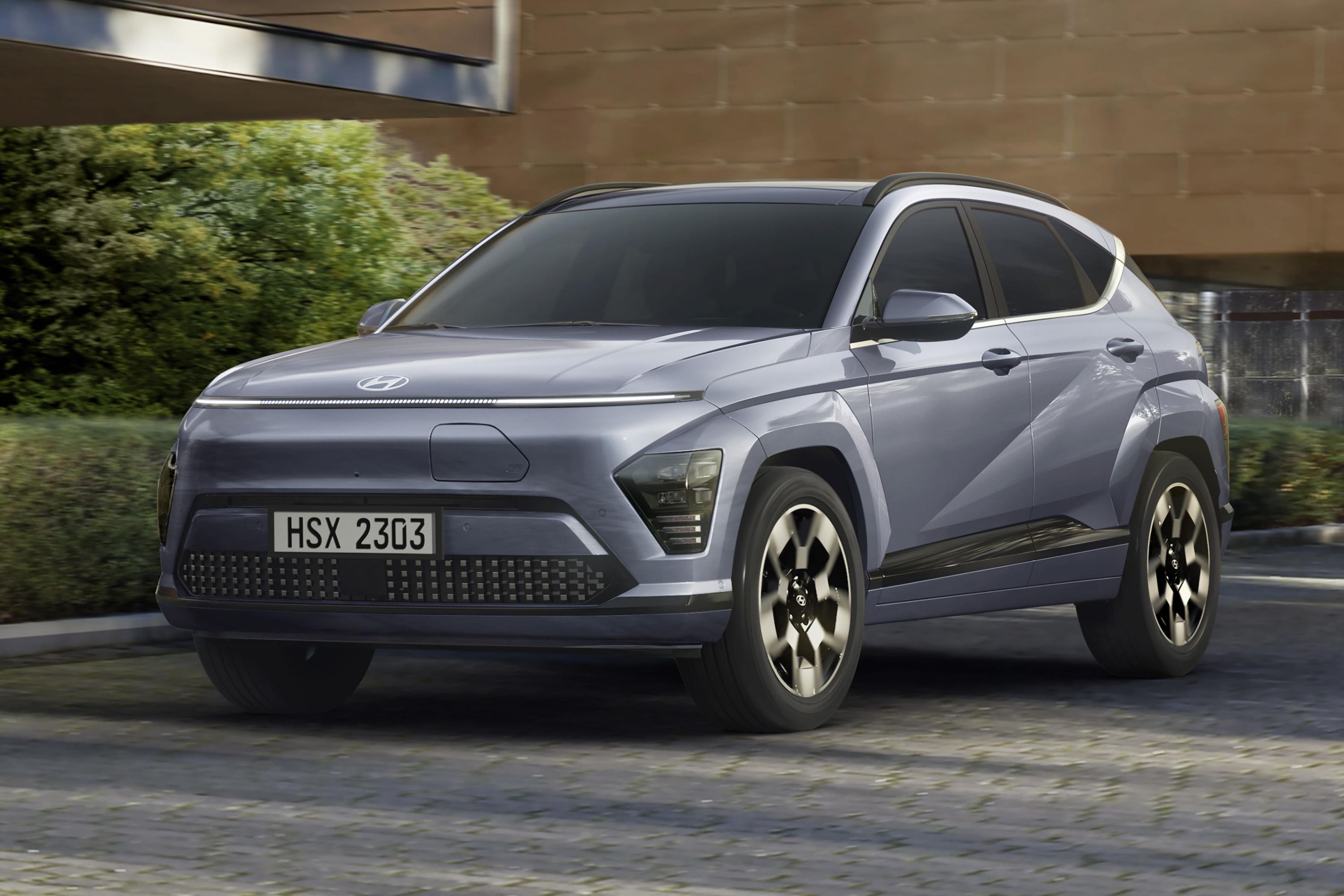
4. **Hyundai Elantra: Reliable and Affordable—With a Caveat**
Hyundai’s Elantra models, specifically those produced from 2018 through 2024, present a compelling combination of affordability and inherent ease of repair. These attributes collectively position the Elantra as a very strong contender for individuals committed to performing their own vehicle maintenance. Its widespread availability of parts further enhances its appeal for DIY projects, ensuring components are always within reach.
However, a significant caveat exists that potential owners should heed: it is strongly advised to steer clear of the 2011–2015 versions, with particular emphasis on avoiding the 2013 model year. This specific generation was unfortunately prone to serious engine issues, which included problems like ticking noises, stalling, and in some more severe cases, outright engine failure, making them less suitable for reliable DIY efforts and potentially costly repairs.
Beyond that problematic generation, the Hyundai Elantra consistently ranks among the easiest cars to maintain. Its design promotes straightforward access to components, and the market is replete with abundant parts availability, which significantly contributes to low overall repair costs. This makes it an economically sound choice for the budget-conscious mechanic, allowing them to save money on labor and parts.
With over 100,000 units sold yearly, the Elantra has firmly established itself as a staple of reliability within its appropriate model years. For owners who are mindful of their budget and seeking a practical, hands-on vehicle, selecting the right Elantra model can surprisingly prove to be a remarkably dependable and rewarding choice for at-home automotive work, offering both savings and a sense of accomplishment.
Car Model Information: 2022 Hyundai ELANTRA N Line
Name: Hyundai Elantra/Avante
Manufacturer: Hyundai Motor Company
Aka: Hyundai Avante,Hyundai Lantra (1990–2000, Australia and Europe),Hyundai i30 Sedan (2020–present, Australia)
Production: 1990–present
Class: Compact car
Layout: Front-engine, front-wheel-drive layout
Predecessor: Hyundai Stellar
Categories: 2000s cars, 2010s cars, 2020s cars, All Wikipedia articles written in British English, All articles with bare URLs for citations
Summary: The Hyundai Elantra (Korean: 현대 엘란트라), also known as the Hyundai Avante (Korean: 현대 아반떼), is a series of compact cars produced by the South Korean manufacturer Hyundai since 1990.
In South Korea, the first-generation model was initially sold under the “Elantra” nameplate, but starting from the second-generation, Korean models were sold under the “Avante” nameplate, with the “Elantra” name continue to be used on export models. The “Avante” name is not used in most export markets due to its similarity with Audi’s “Avant” designation, used for their station wagon models. As of 2018, Singapore is the only export market outside South Korea to utilize the “Avante” name.
In Australia and some European markets, the Elantra was initially marketed as the Lantra during its first two generations, due to the similarly named “Elante” trim for the Mitsubishi Magna in the former market, and the Lotus Elan in the latter. After Mitsubishi Motors Australia Limited (MMAL) dropped the “Elante” trim from the Magna range, and Lotus ceased production of the Elan in 1995, Hyundai standardized the “Elantra” name for both Australian and European markets in 2001, following the introduction of the third-generation model.
The first-generation model was also sold as the Bimantara Nenggala in Indonesia between 1995 and 1998. Since the seventh-generation, the “Elantra” name was retired in Australia, when Hyundai intergrated it into the i30 range, badging it as the i30 Sedan.
Get more information about: Hyundai Elantra
Buying a high-performing used car >>>
Brand: Hyundai Model: Elantra
Price: $20,590 Mileage: 50,794 mi.
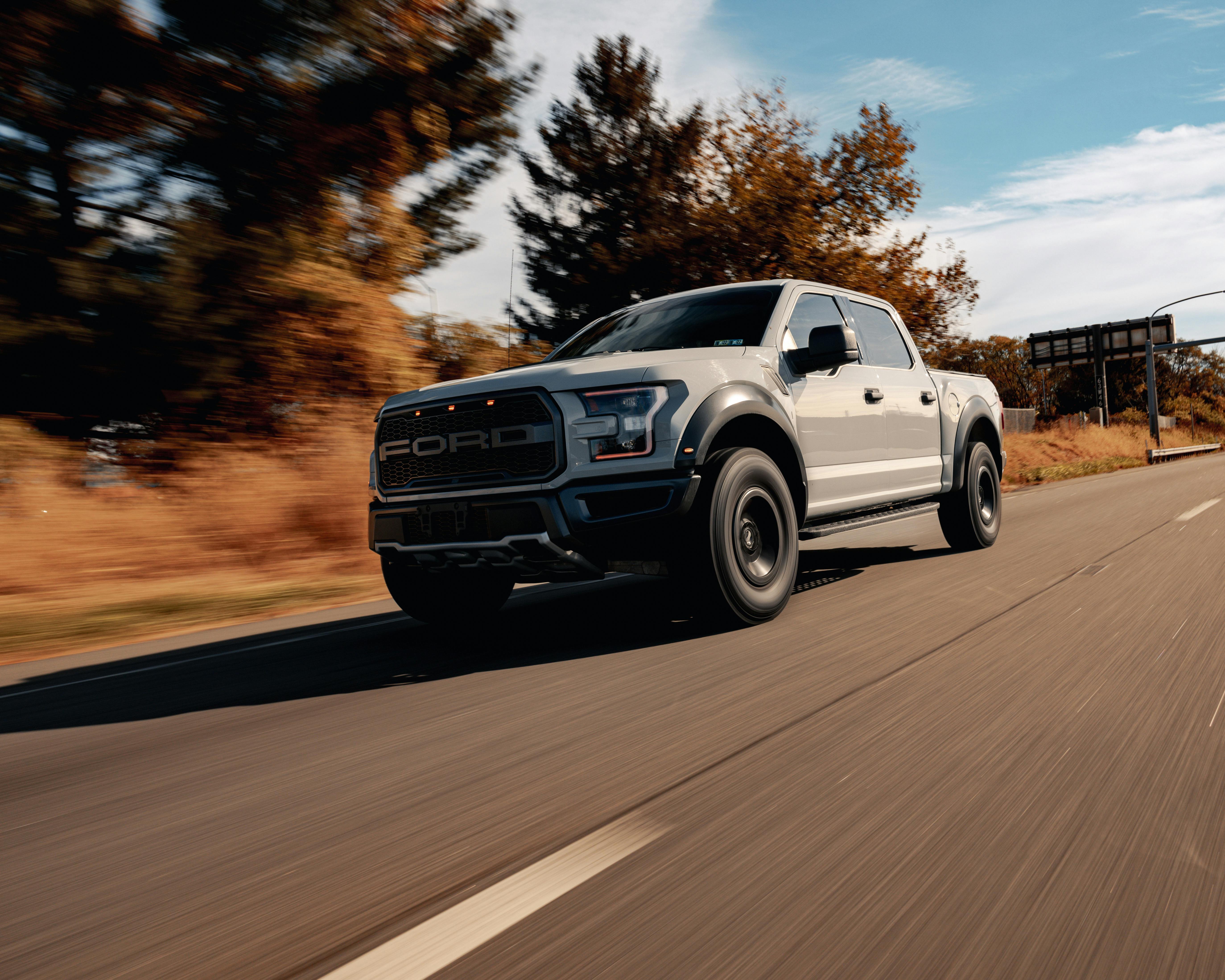
5. **Ford F-150: America’s DIY Favorite**
The Ford F-150’s remarkable ubiquity across the American market transforms it into an absolute goldmine for anyone seeking spare parts and comprehensive repair tutorials. As the best-selling truck in the nation, it not only boasts impressive reliability but is also incredibly well-supported by the aftermarket industry, making it an ideal choice for home repairs and modifications, regardless of their complexity.
Specific model years, particularly those from 2019 through 2024, are highly favored for their robust design and continued ease of maintenance, building on Ford’s legacy of dependable trucks. Conversely, the 2018 version is generally considered less desirable among enthusiasts, primarily due to known transmission problems that can complicate its long-term reliability and DIY potential, warranting caution.
Owners consistently praise the F-150 for its inherent simplicity in undertaking common maintenance tasks. Jobs such as routine brake replacements or essential oil changes are often described as straightforward, allowing for confident execution in a home garage or driveway setting. This accessibility is a major draw for many who prefer to handle their own vehicle care, fostering a deeper connection with their truck.
While more complex tasks, like timing chain replacements in older models, can indeed be challenging, many F-150 owners still enthusiastically choose to take on such challenges themselves, showcasing the vehicle’s capacity as a learning platform. The F-150 thus serves a dual role: it is both a dependable workhorse and an invaluable teacher for individuals keen on learning practical mechanics right in their own driveway, solidifying its status as an iconic DIY favorite.
Car Model Information: 2024 Ford F-150 XLT
Name: Ford F-Series
Caption: 2022 Ford F-150 Lariat Luxury
Manufacturer: Ford Motor Company
Aka: Ford Lobo (Mexico, 1992–present)
Production: 1948–present
Class: Pickup truck#Full-size pickup truck
Layout: Front-engine, rear-wheel-drive layout,rear-wheel drive
Predecessor: 1941 Ford
Categories: All-wheel-drive vehicles, All Wikipedia articles written in American English, All articles that may contain original research, All articles with unsourced statements, Articles that may contain original research from September 2020
Summary: The Ford F-Series is a series of light-duty trucks marketed and manufactured by the Ford Motor Company since model year 1948 as a range of full-sized pickup trucks — positioned between Ford’s Ranger and Super Duty pickup trucks. Alongside the F-150 (introduced in 1975), the F-Series also includes the Super Duty series (introduced in 1999), which includes the heavier-duty F-250 through F-450 pickups, F-450/F-550 chassis cabs, and F-600/F-650/F-750 Class 6–8 commercial trucks.
Get more information about: Ford F-Series
Buying a high-performing used car >>>
Brand: Ford Model: F-150
Price: $40,397 Mileage: 45,515 mi.
Read more about: Behind the Grease and Grime: 12 Cars That Make Mechanics Secretly Cheer (Or Curse) When You Roll In
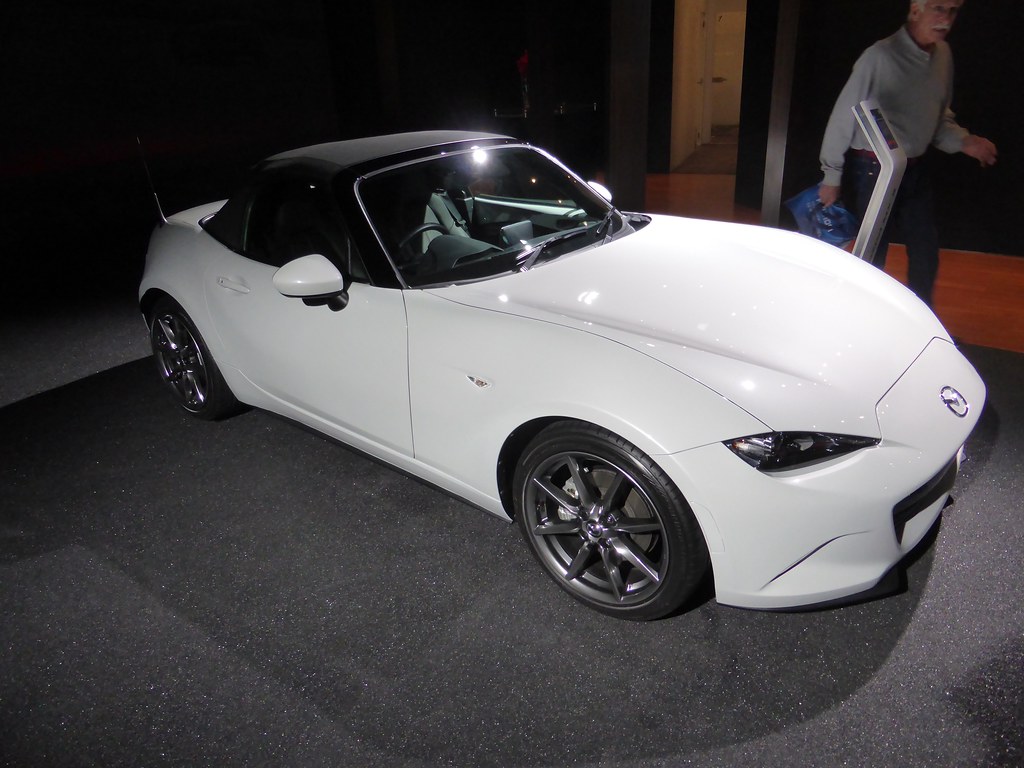
6. **Mazda MX-5 Miata: Pocket-Sized Joy**
For those enthusiasts who yearn for a low-maintenance sports car experience without the typical headaches, the Mazda MX-5 Miata emerges as the perfect answer. This spirited roadster masterfully combines exhilarating performance with an impressive degree of mechanical simplicity, securing its status as a firm favorite among both novice and highly experienced gearheads alike, offering a unique blend of fun and functionality.
The Miata is best maintained and enjoyed when focusing on specific model years, particularly 2013–2015 and the more recent 2017–2024 iterations. These models are widely celebrated for their naturally aspirated engines, which offer a delightful driving experience, and their intelligently designed, easily accessible components, simplifying routine checks and repairs, making the engine bay a joy to explore.
Its compact size is a significant advantage, as it contributes to an intuitive layout that makes basic repairs and routine checks feel remarkably straightforward, often more akin to a weekend project than a daunting task. While the main reported issue often lies with its AC compressor, beyond this specific component, the Miata proves to be exceptionally affordable to maintain, with an estimated annual cost hovering around just $429.
The Mazda MX-5 Miata truly represents a joyful and highly user-friendly car that warmly welcomes grease-stained hands and genuinely curious minds. It stands as a testament to the idea that a sports car can be both thrilling to drive and wonderfully approachable to maintain, fostering a deep and satisfying connection between owner and machine, and encouraging a hands-on approach to sports car ownership.
Car Model Information: 2023 GMC Sierra 1500 AT4
Name: Mazda MX-5
Manufacturer: Mazda
Aka: unbulleted indent list
Production: 1989–present
Assembly: Hiroshima
Class: Roadster (car),sports car
Layout: unbulleted indent list
Platform: List of Mazda model codes#Model codes
Categories: 1990s cars, 2000s cars, 2010s cars, 2020s cars, All Wikipedia articles in need of updating
Summary: The Mazda MX-5 is a lightweight two-seat sports car manufactured and marketed by Mazda. In Japan, it is marketed as the Mazda Roadster or, previously, as the Eunos Roadster. In the United States it is sold as the Mazda Miata (), and it was formerly marketed under the same name in Canada. The name miata derives from Old High German for “reward”.
Produced at Mazda’s Hiroshima plant, the MX-5 debuted in 1989 at the Chicago Auto Show. It was created under the design credo Jinba ittai, meaning “unity of horse and rider”. Noted for its small, light, balanced and minimalist design, the MX-5 has often been described as a successor to the 1950s and 1960s Italian and British roadsters, with the Lotus Elan serving as a design benchmark.
Each generation is identified by a two-letter code, beginning with the first generation NA. The second generation NB launched in 1998, followed by the third generation NC in 2005, and the fourth generation ND in 2015.
More than one million MX-5s have been sold, making it the best-selling two-seat convertible sports car in history.
Get more information about: Mazda MX-5
Buying a high-performing used car >>>
Brand: Mazda Model: MX-5 Miata
Price: $56,980 Mileage: 28,414 mi.
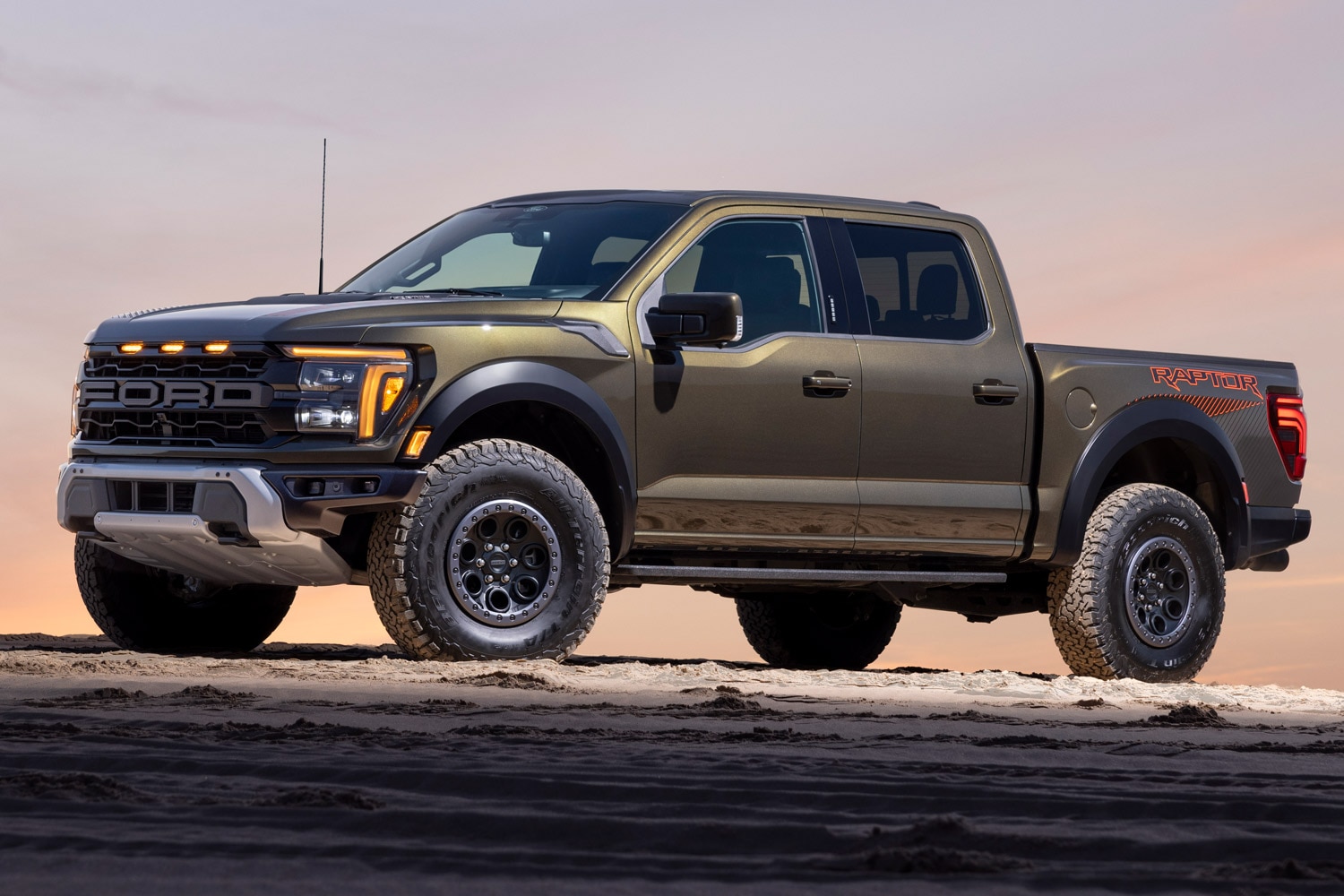
7. **Ford Mustang: The Starter Project Car**
For aspiring restorers and individuals looking to embark on more ambitious repair or modification projects, the Ford Mustang presents itself as an absolutely classic and exceptionally popular choice. With its extensive and storied history, coupled with an enormous and passionately dedicated enthusiast community, it is perfectly suited for those ready to dip their toes into more comprehensive automotive undertakings, offering a rich platform for learning.
Current models from 2017 through 2024 are lauded as solid platforms, offering modern performance with a foundational ease of maintenance, ensuring reliability for contemporary drivers. However, many seasoned gearheads still affectionately swear by the fourth-generation GT, particularly those equipped with the robust 4.6-liter V8 engine, valuing its blend of outstanding ease of access and rugged, enduring reliability that makes it a joy to work on in the garage.
While the 2010 model is generally advised to be avoided due to known corrosion issues, the vast majority of Mustangs across various generations consistently offer an excellent combination of accessibility for repairs and wide availability of parts. This robust ecosystem ensures that DIYers can easily find what they need, whether it’s a common replacement or a specialized modification component, making repairs less daunting.
Whether the goal is a full restoration, a performance upgrade, or simply routine maintenance, this iconic American muscle car provides a fantastic avenue for building confidence and expertise under the hood. The Mustang is not just a car; it’s a blank canvas and a patient teacher, inviting owners to explore, learn, and truly make the vehicle their own, fostering a profound sense of mechanical empowerment and a deep connection to automotive heritage.
Car Model Information: 2022 Ford Mustang GT Premium
Name: Ford Mustang
Caption: 2018 Ford Mustang GT 5.0
Aka: Ford T5 (Germany)
Manufacturer: Ford Motor Company
Production: March 1964 – present
ModelYears: 1965–present
Class: Unbulleted list
BodyStyle: Unbulleted list
Layout: Front-engine, rear-wheel-drive layout
Categories: 1970s cars, 1980s cars, 1990s cars, 2+2 coupés, 2000s cars
Summary: The Ford Mustang is an American automobile manufactured and marketed by Ford since 1964, as Ford’s longest nameplate in continuous production. Currently in its seventh generation, it is the fifth-best selling Ford car nameplate. The namesake of the “pony car” automobile segment, the Mustang was developed as a highly styled line of sporty coupes and convertibles derived from existing model lines, initially distinguished by its pronounced “long hood, short deck” proportions.
Originally predicted to sell 100,000 vehicles yearly, the 1965 Mustang became the most successful vehicle launch since the 1927 Model A. Introduced on April 17, 1964 (16 days after the Plymouth Barracuda), over 400,000 units were sold in its first year; the one-millionth Mustang was sold within two years of its launch. In August 2018, Ford produced the 10-millionth Mustang; matching the first 1965 Mustang, the vehicle was a 2019 Wimbledon White convertible with a V8 engine.
The success of the Mustang launch led to multiple competitors from other American manufacturers, including the Chevrolet Camaro and Pontiac Firebird (1967), AMC Javelin (1968), and Dodge Challenger (1970). It also competed with the Plymouth Barracuda, which was launched around the same time. The Mustang also had an effect on designs of coupes worldwide, leading to the marketing of the Toyota Celica and Ford Capri in the United States (the latter, by Lincoln-Mercury). The Mercury Cougar was launched in 1967 as a unique-bodied higher-trim alternative to the Mustang; during the 1970s, it included more features and was marketed as a personal luxury car.
From 1965 until 2004, the Mustang shared chassis commonality with other Ford model lines, staying rear-wheel-drive throughout its production. From 1965 to 1973, the Mustang was derived from the 1960 Ford Falcon compact. From 1974 until 1978, the Mustang (denoted Mustang II) was a longer-wheelbase version of the Ford Pinto. From 1979 until 2004, the Mustang shared its Fox platform chassis with 14 other Ford vehicles (becoming the final one to use the Fox architecture). Since 2005, the Mustang has used the D2C platform, unique to the Mustang.
Through its production, multiple nameplates have been associated with the Ford Mustang series, including GT, Mach 1, Boss 302/429, Cobra (separate from Shelby Cobra), and Bullitt, along with “5.0” fender badging (denoting 4.9 L OHV or 5.0 L DOHC V8 engines).
Get more information about: Ford Mustang
Buying a high-performing used car >>>
Brand: Ford Model: Mustang
Price: $38,956 Mileage: 21,117 mi.
Read more about: 12 Roaring Muscle Car Memories That Will Burn Rubber in Your Brain Forever

8. **Kia Soul: Compact, Cheap, and Capable**
The Kia Soul admirably demonstrates that a vehicle doesn’t need to be extravagant to be incredibly functional and easy to maintain. This distinctive boxy compact car, with its optimal years falling between 2017–2019 and 2021–2024, is highly regarded for its remarkably low maintenance costs, which average around $437 annually. Its widespread availability of parts further solidifies its appeal, making it a reliable choice for budget-conscious mechanics.
However, prospective owners should exercise caution and steer clear of the 2016 model year, which unfortunately gained a reputation for being plagued by significant engine failure issues. For those choosing the right model, the combination of abundant online tutorials and an inherently intuitive engine layout means that even tasks that might seem complicated can become surprisingly manageable for the average DIYer. This accessibility fosters confidence and encourages a deeper engagement with vehicle upkeep.
The Kia Soul ultimately stands out as a surprisingly robust and user-friendly little car. It offers substantial savings on labor costs and presents invaluable learning opportunities for anyone eager to get hands-on with their vehicle maintenance. It’s a testament to practical engineering that empowers owners to take control of their automotive care, transforming routine tasks into rewarding experiences.
Car Model Information: 2021 Kia Soul S
Name: Kia Soul
Caption: 2023 Kia Soul GT Line
Manufacturer: Kia
Production: 2008–2025
Class: Subcompact crossover SUV
BodyStyle: hatchback
Layout: Front-engine, front-wheel-drive
ModelYears: 2010–2025
Categories: 2010s cars, All articles with dead external links, All articles with unsourced statements, Articles containing Korean-language text, Articles with dead external links from December 2017
Summary: The Kia Soul (Korean: 기아 쏘울) is a subcompact crossover SUV manufactured and marketed by Kia from 2008 to 2025. Often described and marketed as a crossover since its introduction, the Soul is a hatchback with a box proportion and tall roof, which are designed to maximize its interior space. Despite its SUV-like styling, the Soul was never available with all-wheel drive, instead it is exclusively a front-wheel drive vehicle.
The Soul first appeared in 2006 in the form of a concept model displayed at the North American International Auto Show in Detroit. The production model made its debut at the Paris Motor Show in 2008. During its introduction, Kia stated that the Soul is aimed at the North American market, and targeted towards buyers in the 18 to 35-year old range.
The second-generation model was introduced in 2013 for the 2014 model year, which featured a larger exterior and interior dimensions along with a reworked chassis, while keeping its boxy styling. The Soul is currently in its third generation, which was introduced in 2018 for the 2019 model year. Since 2014, Kia has also marketed a battery electric variant as the Soul EV.
The name “Soul” comes from the homophone of Seoul, the city that hosts Kia’s headquarters.
On October 6, 2025, Kia announced that production of the Soul will end later in the month.
Get more information about: Kia Soul
Buying a high-performing used car >>>
Brand: Kia Model: Soul
Price: $16,300 Mileage: 22,739 mi.
Read more about: 12 Affordable Cars and Brands That Consistently Excel in Reliability and Low Repair Costs

9. **Ford Explorer: SUV Simplicity at Its Best**
The Ford Explorer has long been cherished as a family-friendly SUV, maintaining a strong presence on American roads since its introduction in 1990. Beyond its renowned practicality and accommodating size, a lesser-known but equally significant advantage is its relative straightforwardness for at-home maintenance. This accessibility makes it a compelling option for those who prefer to tackle their own repairs and upkeep.
Its enduring popularity, evidenced by nearly 200,000 units sold in 2024 alone, ensures that spare parts and comprehensive repair guides are consistently easy to locate. This extensive support network is a massive boon for DIYers. While recommended years for optimal reliability and ease of maintenance include 2007–2012 and 2017–2024, it’s crucial to be aware that the 2006 model is widely known to suffer from severe transmission issues, making it a less suitable candidate for trouble-free ownership.
With a robust ground clearance of roughly eight inches, routine tasks such as oil changes and tire rotations become considerably more manageable, often achievable without the need for specialized lifts. For families or individuals seeking a versatile SUV that doesn’t compromise on DIY potential, the Ford Explorer emerges as an exceptionally smart and dependable choice. It truly combines utility with the rewarding experience of personal automotive care.
Car Model Information: 2022 Ford Explorer Platinum
Name: Ford Explorer
Caption: Sixth-generation Ford Explorer
Manufacturer: Ford Motor Company
Production: 1990–present
ModelYears: 1991–present
Class: unbulleted list
Chassis: unbulleted list
Predecessor: Ford Bronco II
Successor: Ford Territory (Australia)
Categories: 2000s cars, 2010s cars, 2020s cars, All-wheel-drive vehicles, All Wikipedia articles in need of updating
Summary: The Ford Explorer is a range of SUVs manufactured by the Ford Motor Company since the 1991 model year. The first five-door SUV produced by Ford, the Explorer, was introduced as a replacement for the three-door Bronco II. As with the Ford Ranger, the model line derives its name from a trim package previously offered on Ford F-Series pickup trucks. As of 2020, the Explorer became the best-selling SUV in the American market.
Currently in its sixth generation, the Explorer has featured a five-door wagon body style since its 1991 introduction. During the first two generations, the model line included a three-door wagon (directly replacing the Bronco II). The Ford Explorer Sport Trac is a crew-cab mid-size pickup derived from the second-generation Explorer. The fifth and sixth generations of the Explorer have been produced as the Ford Police Interceptor Utility (replacing both the Ford Crown Victoria Police Interceptor and the Ford Police Interceptor Sedan).
The Explorer is slotted between the Ford Edge and Ford Expedition within North America’s current Ford SUV range. The model line has undergone rebadging several times, with Mazda, Mercury, and Lincoln each selling derivative variants. Currently, Lincoln markets a luxury version of the Explorer as the Lincoln Aviator.
For the North American market, the first four generations of the Explorer were produced by Ford at its Louisville Assembly Plant (Louisville, Kentucky) and its now-closed St. Louis Assembly Plant (Hazelwood, Missouri). Ford currently assembles the Explorer alongside the Lincoln Aviator and the Police Interceptor Utility at its Chicago Assembly Plant (Chicago, Illinois).
Get more information about: Ford Explorer
Buying a high-performing used car >>>
Brand: Ford Model: Explorer
Price: $33,399 Mileage: 35,792 mi.

10. **Jeep Wrangler: Easier Than Its Reputation**
Despite the persistent jokes and stereotypes surrounding Jeep’s reliability, modern Jeep Wranglers—especially those produced from 2016 onward—prove to be surprisingly user-friendly when it comes to hands-on maintenance. In fact, newer versions have earned high ratings from J.D. Power, reflecting a notable improvement in overall quality and dependability. This makes them an intriguing option for mechanically curious owners.
It is wise to be cautious of older models, such as the 2008 and 2012 versions, which have been associated with notorious issues like the “death wobble” and various electrical faults that can complicate ownership and repair. However, the real allure of the modern Wrangler for DIY enthusiasts lies in its exceptionally open and spacious engine bay. This thoughtful design provides superb access for nearly every task, from simple fluid top-ups to more involved part swaps, making the learning curve much less steep.
Interestingly, many of the perceived reliability issues often attributed to Wranglers actually stem from the widespread prevalence of aftermarket modifications rather than inherent factory flaws. The robust culture of customization can sometimes introduce complexities that aren’t present in the stock vehicle. For individuals who are willing to engage with their hands and are mindful about avoiding unnecessary, poorly executed modifications, the Wrangler can truly transform into an exceptionally fun and profoundly rewarding machine to maintain and personalize.
Car Model Information: 2015 Jeep Wrangler Sahara
Name: Jeep Wrangler
Caption: Jeep Wrangler Unlimited, Sahara edition
Manufacturer: Jeep
Class: Compact SUV
Production: 1986–present
Predecessor: Jeep CJ
Layout: Front-engine, rear-wheel-drive layout,rear-wheel drive
Chassis: Body-on-frame
Related: AIL Storm
Categories: 1980s cars, 1990s cars, 2000s cars, 2010s cars, All-wheel-drive vehicles
Summary: The Jeep Wrangler is a series of compact and mid-size four-wheel drive off-road SUVs manufactured by Jeep since 1986, and currently in its fourth generation. The Wrangler JL, the most recent generation, was unveiled in late 2017 and is produced at Jeep’s Toledo Complex.
The Wrangler is a direct progression from the World War II Jeep, through the CJ (Civilian Jeeps) produced by Willys, Kaiser-Jeep, and American Motors Corporation (AMC) from the mid-1940s through the 1980s. Although neither AMC nor Chrysler (after it purchased AMC in 1987) have claimed that the Wrangler was a direct descendant of the original military model — both the CJ Jeeps and the conceptually consistent Wrangler, with their solid axles and open top, have been called the Jeep model as central to Jeep’s brand identity as the rear-engine 911 is to Porsche.
Similar to the Willys MB and the CJ Jeeps before it, all Wrangler models continue to use a separate body and frame, rigid live axles both front and rear, a tapering nose design with flared fenders, a fold-flat windshield, and can be driven without doors. Also, with few exceptions, they have part-time four-wheel drive systems, with the choice of high and low gearing, and standard open bodies with removable hard or soft tops. However, the Wrangler series was specifically redesigned to be safer and more comfortable on-road, to attract more daily drivers, by upgrading its suspension, drivetrain, and interior, compared to the CJ line. The suspension on all Wranglers included trackbars and anti-roll bars, and, from the 1997 TJ onwards, front and rear coil springs instead of the previous leaf springs.
From 2004 onward, the Wrangler has been complemented with long-wheelbase versions, called Wrangler Unlimited. 2004-2006 models were longer versions with 2 doors. In 2004, only automatic transmission-equipped “Unlimited” versions were sold. In 2005, both an automatic and manual 6-speed (NSG-370) were offered. Since 2007, the long-wheelbase Wranglers were four-door models, offering over 20 in (508 mm) more room. By mid-2017, the four-door models represented three-quarters of all new Wranglers on the market.
Get more information about: Jeep Wrangler
Buying a high-performing used car >>>
Brand: Jeep Model: Wrangler
Price: $10,550 Mileage: 157,089 mi.
Read more about: The Ultimate Guide for Pet Owners: Uncovering the Top 14 Vehicles for Safe and Comfortable Travel with Canine Companions
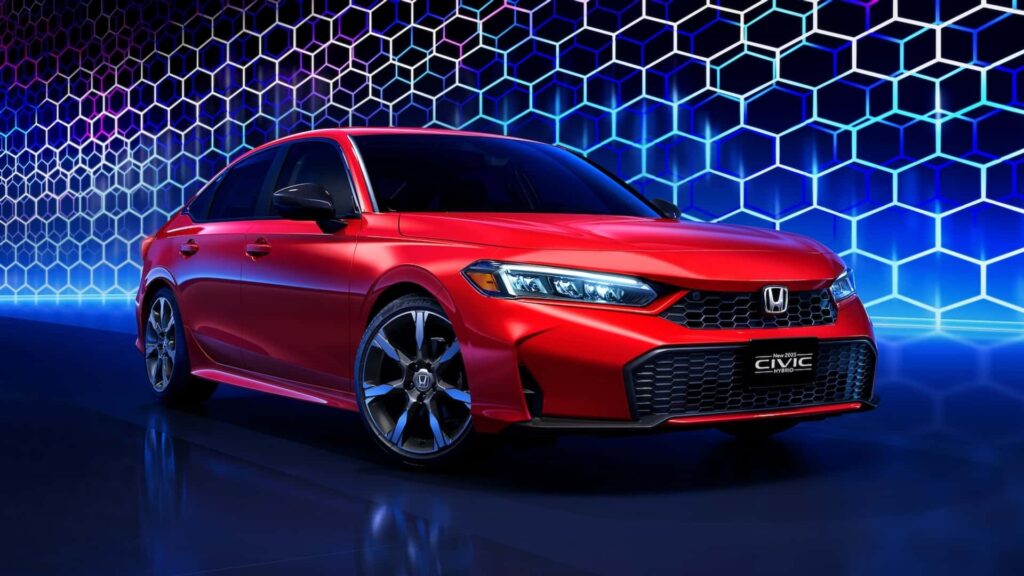
11. **1992 to 2000 Honda Civic: The Definitive Beginner’s Car**
The Honda Civic, particularly models from 1992 to 2000, has earned a legendary status for its famous reliability and a near-impossible capacity for a novice to “screw up” during maintenance. For those just embarking on their DIY automotive journey, the ideal choice would be models equipped with the basic non-VTEC D15 or D16 engines. These Single Overhead Cam (SOHC) setups are wonderfully simple, lacking the variable cam timing or complex solenoids that can complicate diagnosis and repair.
It’s generally recommended that beginners avoid anything with VTEC, such as the Si or EX trims, and certainly any B-series engine swaps. These configurations are inherently more complex under the hood. More importantly, such modified cars are significantly more likely to have been subjected to various, often questionable, aftermarket alterations—think “janky intakes, backyard tunes, and turbo kits held together with zip ties”—which can lead to unnecessary headaches for a new mechanic.
Regarding diagnostics, you’ll be pleased to know that specialized dealer-only scanners are rarely necessary. A decent basic tool set, perhaps coupled with an affordable Harbor Freight scanner, will adeptly handle most common jobs a beginner will encounter. Earlier pre-1995 OBDI cars are so remarkably simple that error codes can often be read by merely counting flashing lights. Furthermore, once you gain comfort with basic repairs, the aftermarket support for these Civics is virtually limitless, whether your goal is daily reliability or diving into modification.
Clean, unmolested examples of these Civics, particularly the iconic EJ1 coupes from “The Fast & The Furious,” retain their value exceptionally well. This means that every repair or maintenance task you undertake can be viewed not just as an investment in your skills, but also in the enduring worth of your vehicle. The 1992 to 2000 Civic truly stands as a patient teacher and a rewarding companion for the aspiring gearhead.
Car Model Information: 2013 Honda Civic EX
Caption: 2024 Honda Civic liftback
Manufacturer: Honda
Aka: ubl
Production: 1972–present
Class: Subcompact car
BodyStyle: fastback,Sedan (automobile)
Layout: Front-engine, front-wheel-drive layout,Front-engine, four-wheel-drive layout
Predecessor: Honda N600,Honda Z600
Categories: 1980s cars, 1990s cars, 2000s cars, 2010s cars, 2020s cars
Summary: The Honda Civic (Japanese: ホンダ・シビック, Hepburn: Honda Shibikku) is a series of automobiles manufactured by Honda since 1972. As of 2023, the Civic is positioned between the Honda Fit/City and Honda Accord in Honda’s global passenger car line-up. It is one of the best-selling automobiles in history, with over 27 million units sold through 2021.
The first-generation Civic was introduced in July 1972 as a two-door fastback sedan, followed by a three-door hatchback that September. With a 1,169 cc transverse engine and front-wheel drive, the car provided good interior space despite its small overall dimensions. Initially gaining a reputation for being fuel-efficient, reliable and environmentally friendly, later iterations have become known for performance and sportiness, especially the Civic Si, SiR, and Type R versions. It is currently in its eleventh generation, which has been produced since 2021.
The Civic has often been rebadged for international markets, and it served as the basis for the Honda CR-X, the Honda CR-X del Sol, the Concerto, the first generation Prelude, the Civic Shuttle (which later became the Orthia) and the CR-V (which in turn was used as the basis for the Honda FR-V).
Get more information about: Honda Civic
Buying a high-performing used car >>>
Brand: Honda Model: Civic
Price: $9,995 Mileage: 121,710 mi.

12. **1992 to 2011 Ford Crown Victoria: The Unsung V8 Classroom**
Step into the world of the Ford Crown Victoria, affectionately known as the “last of the dinosaurs” (and meant in the most loving way possible). Along with its Panther Platform siblings, this vehicle is a magnificent, body-on-frame, V8-powered land yacht, built with the rugged and straightforward soul of a classic pickup truck. Pop the hood on that venerable 4.6L modular V8, and you’ll immediately notice acres of space.
This famously reliable engine quite literally lounges in its bay, with not a single plastic shroud in sight to obscure its mechanical secrets. You can visibly inspect and physically touch almost every component, transforming the engine bay into a perfect, no-stress classroom for learning your way around a V8 powerplant. For the utmost in reliability, opting for a civilian model or a Grand Marquis, perhaps one that was quietly piloted by a meticulously careful grandparent, is often the wisest choice. However, if you’re feeling adventurous, the P71 Police Interceptor offers a unique experience, though it’s important to remember its likely past life of high-stress duty.
Regardless of your chosen variant, you should anticipate a few common quirks that, for a DIYer, are more like rites of passage than major issues. The nylon resin intake manifold on pre-2002 models is well-known for cracking, but upgrading it to an aluminum one is a highly documented and satisfying fix within the community. Similarly, when the blend door actuator for the HVAC system inevitably starts clicking like an agitated cricket, you’ll find a wealth of YouTube tutorials ready to guide you through this surprisingly cheap and straightforward repair.
Conquering these minor challenges will not only save you money but also officially earn you your wrenching stripes, solidifying the Crown Vic’s reputation as a supremely accessible and rewarding vehicle for the home mechanic. It truly embodies a powerful yet approachable platform for automotive learning.
Car Model Information: 2023 GMC Sierra 1500 AT4
Name: Ford Crown Victoria
Caption: 1998–2002 Ford Crown Victoria LX
Manufacturer: Ford Motor Company
Production: January 1991 – September 15, 2011
ModelYears: 1992–2012
Assembly: Talbotville, Southwold, Ontario
Class: Full-size car
BodyStyle: Sedan (automobile)
Platform: Ford Panther platform
Layout: Front-engine, rear-wheel drive layout,body-on-frame
Predecessor: Ford LTD Crown Victoria
Categories: 2000s cars, 2010s cars, All Wikipedia articles in need of updating, All articles needing additional references, All articles with dead external links
Summary: The Ford Crown Victoria (“Crown Vic”) is a full-size sedan that was marketed and manufactured by Ford. The successor to the Ford LTD Crown Victoria, two generations of the model line were produced from the 1992 until the 2012 model years. The Ford counterpart of the Mercury Grand Marquis, the Crown Victoria was the largest sedan marketed by Ford in North America, slotted above the Ford Taurus. The Crown Victoria Police Interceptor (1992–2011) was marketed specifically for law-enforcement use; a long-wheelbase Crown Victoria sedan (2002–2011) was marketed primarily for taxi cab fleets.
The Crown Victoria was produced on the rear-wheel drive, body-on-frame Ford Panther platform, sharing its chassis with the Grand Marquis and Lincoln Town Car. From 1997 until their 2011 discontinuation, the three model lines were the sole four-door sedans produced in North America with a full-length frame, rear-wheel drive, and a standard V8 engine. While the front and rear crumple zones were engineered into the vehicle, it was one of Ford’s products that were not of unibody construction for the entire generation. The Crown Victoria was the last car made using the Ford Panther platform.
For its entire production, the Crown Victoria was produced by Ford Canada alongside the Grand Marquis at St. Thomas Assembly in Southwold, Ontario. From 1991 until 2011, over 1.5 million cars (including Police Interceptors) were produced by St. Thomas Assembly prior to its closure. A 2012 Crown Victoria (intended for Middle East export) was the final vehicle produced by the facility. Following the discontinuation of the model line, the Crown Victoria was not directly replaced, with the full-size Ford Taurus serving as the next basis for Ford police cars.
Get more information about: Ford Crown Victoria
Buying a high-performing used car >>>
Brand: Ford Model: Crown Victoria
Price: $56,980 Mileage: 28,414 mi.

13. **1999 to 2007 Chevrolet Silverado: The Enduring Workhorse**
There’s a very clear reason why you still see so many of these trucks on the road today, and it certainly isn’t primarily for their aesthetic appeal. The GMT800 generation Chevrolet Silverado is celebrated as a mechanically simple workhorse that possesses an almost stubborn refusal to quit. Powering these robust trucks are the venerable LS-based Vortec V8s, engines renowned for their incredible toughness; some examples effortlessly accumulate 300,000 miles or more with nothing more than diligent basic care.
Even better for the home mechanic, the engine bay is so generously wide open that you don’t need particularly tiny hands or specialized bendy wrenches to reach any component. For optimal simplicity and to spare yourself from delving into the complexities of transfer cases and front differentials before you’re fully ready, it’s advisable to stick with a 2WD model. However, before committing, it’s absolutely essential to thoroughly inspect the wheel wells, rocker panels, and cab corners for any signs of rust. This corrosion is arguably this truck’s only significant vulnerability, and finding a model with a “Swiss cheese” aesthetic should prompt you to walk away.
Beyond the rust potential, other common problems encountered with these Silverados are more akin to valuable practice runs than insurmountable deal-breakers. A flaky instrument cluster, for instance, typically signals worn stepper motors, which presents a cheap and surprisingly satisfying soldering fix for the budding electrician. Furthermore, when the fuel pump eventually decides to give up, most owners find it far simpler to unbolt the truck bed and slide it back rather than wrestling with the fuel tank, a task that, while it sounds unconventional, is faster, cleaner, and extensively covered by online walkthroughs.
The 1999 to 2007 Chevrolet Silverado stands as an enduring testament to robust, straightforward engineering. It’s a truck that invites owners to learn, repair, and truly connect with their vehicle, making every maintenance task a step towards greater mechanical mastery. It’s a reliable companion for both work and the rewarding journey of DIY car care.
Car Model Information: 1997 Chevrolet 1500 Silverado
Name: Chevrolet Silverado/GMC Sierra
Caption: 2022 Silverado 2500HD High Country
Manufacturer: General Motors
Aka: unbulleted list
Production: 1998–present
Assembly: unbulleted list
Class: unbulleted list
BodyStyle: unbulleted list
Layout: unbulleted list
Predecessor: unbulleted list
Categories: 2000s cars, 2010s cars, 2020s cars, All-wheel-drive vehicles, All Wikipedia articles written in American English
Summary: The Chevrolet Silverado is a range of trucks manufactured by General Motors under the Chevrolet brand. Introduced for the 1999 model year, the Silverado is the successor to the long-running Chevrolet C/K model line. Taking its name from the top trim level from the Chevrolet C/K series, the Silverado is offered as a series of full-size pickup trucks, chassis cab trucks, and medium-duty trucks. The fourth generation of the model line was introduced for the 2019 model year.
The Chevrolet Silverado shares mechanical commonality with the identically related GMC Sierra; GMC ended the use of the C/K nomenclature a model generation prior to Chevrolet. In Mexico, high-trim level versions of the Silverado use the Chevrolet Cheyenne name (not to be confused with the 2003 concept). Competing against the Ford F-Series, Ram pickup, Toyota Tundra, and Nissan Titan, the Silverado is among the best-selling vehicles in the United States, having sold over 12 million trucks since its introduction in 1998 as a 1999 model year.
Get more information about: Chevrolet Silverado
Buying a high-performing used car >>>
Brand: Chevrolet Model: Silverado
Price: Not Priced Mileage: 185,958 mi.
Read more about: 12 Vehicles That Will Test Your Patience (and Your Wallet) with Never-Ending Electronic Glitches
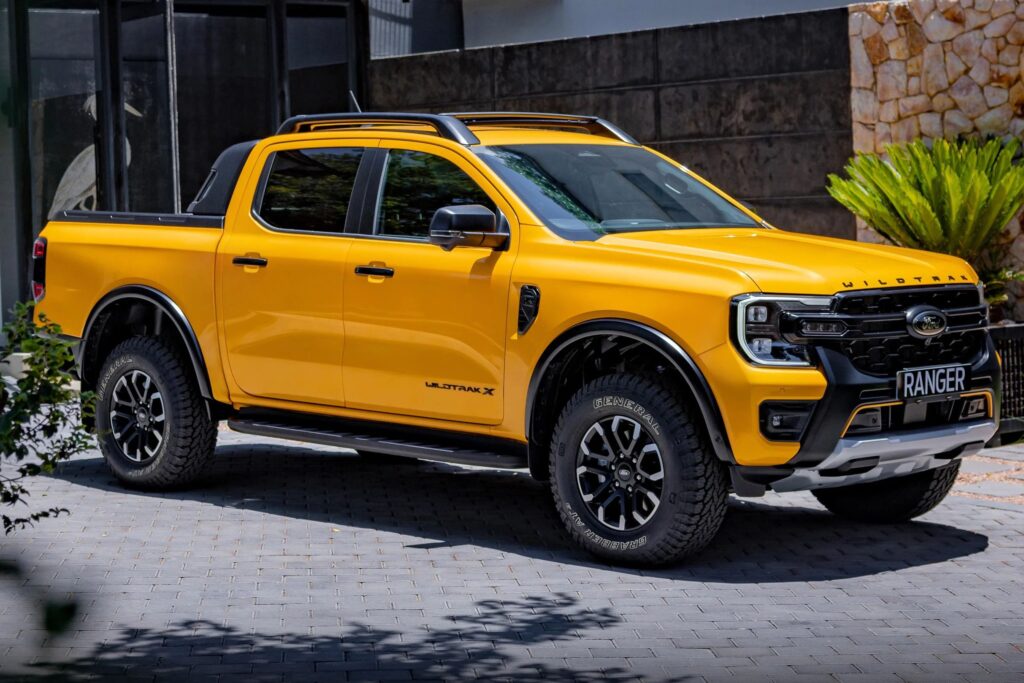
14. **1998 to 2011 Ford Ranger: The Compact Truck for Every DIYer**
Ford manufactured the Ranger for what feels like an eternity, and this extended production run translates into excellent news for anyone keen on DIY car maintenance. The design is thoroughly proven, the supply of parts is virtually endless, and the fixes required are as straightforward as they come, making it an ideal platform for learning and ongoing care. The key to maximizing its DIY potential lies in selecting the right engine. For unparalleled durability and simplicity, the 2.3L Lima four-cylinder engine is highly recommended. Pair that with a rear-wheel-drive configuration and a manual transmission, and you’ve got yourself the perfect starter truck.
One of the Ranger’s most significant advantages is its compact size. It’s not only small enough to easily park in tight spots, but more importantly, its manageable dimensions make wrenching on it far less strenuous, preventing you from having to twist yourself into uncomfortable pretzels. Everything under the hood is readily accessible and in plain sight, with components light enough to maneuver and simple to swap out. Routine tasks like oil changes, comprehensive brake jobs, and even a clutch replacement feel considerably less intimidating on a Ranger than on a full-size pickup, boosting confidence with every successful repair.
When it comes to sourcing parts, the Ford Ranger comes with a built-in “cheat code.” Ford produced millions of these trucks, alongside the nearly identical Mazda B-Series, and they share a vast number of components with the popular Ford Explorer. This extensive cross-compatibility means that salvage yards are often overflowing with available parts. Whether you’re in need of a new fender, an alternator, or even a complete engine, you’ll likely find whatever you require for a price comparable to a casual pizza night, making repairs incredibly cost-effective.
The 1998 to 2011 Ford Ranger is a genuine gem for aspiring and experienced mechanics alike. Its blend of simplicity, durability, and abundant support makes it an excellent choice for anyone looking to master their vehicle’s mechanics without breaking the bank. It truly embodies the spirit of practical, rewarding automotive DIY.
Car Model Information: 2021 Ford Ranger XL
Categories: All set index articles, Articles with short description, Cars introduced in 1982, Commons category link from Wikidata, Ford vehicles
Summary: The Ford Ranger is a compact or mid-size pickup marketed globally by Ford over a series of generations, varying between both in-house or outside development and manufacturing — and with a hiatus in North America from 2011–2018.
Debuting as a compact pickup in North America in 1982 for the 1983 model year, the Ranger was later introduced in some South American countries. From 1998 to 2011, the Ranger nameplate was used for models developed by Mazda for sale outside the North American market. In 2011, Ford introduced the first Ranger based on the T6 platform. Considered a mid-size pickup truck, the model was developed in-house by Ford Australia. In that same year, the North American-market Ranger was discontinued, leaving the T6 platform-based Ranger as the sole Ranger model worldwide.
For the 2019 model year, the Ranger was reintroduced in North America using the globally-marketed T6 model. It is manufactured at the Michigan Assembly Plant at Wayne, Michigan. The Ranger is smaller than the F-150 and larger than the Maverick in the Ford North American pickup truck range, while for markets outside the Americas it is typically the only Ford pickup offered for sale.
The second generation of the T6-based Ranger was released in 2021 for worldwide markets, using a revised T6 platform.
Get more information about: Ford Ranger
Buying a high-performing used car >>>
Brand: Ford Model: Ranger
Price: $24,950 Mileage: 34,853 mi.
For many car enthusiasts, a vehicle is far more than mere transportation; it’s a profound source of pride, a hands-on education, and an immense source of joy. While the convenience of low-maintenance electric vehicles appeals to some, a distinct segment of drivers wholeheartedly embraces the occasional scraped knuckle, the satisfying thrum of a freshly tuned engine, and the quiet satisfaction of a Saturday afternoon spent expertly turning wrenches in the driveway. The diverse models explored here—from the humble, yet incredibly capable, Kia Soul to the iconic, project-ready Ford Ranger—offer varying degrees of mechanical simplicity and enduring reliability, catering to every skill level. Whether you’re a beginner eager to learn the ropes or an experienced gearhead seeking a rewarding challenge, these vehicles stand out as exceptional choices for at-home maintenance. For true automotive enthusiasts, the path to satisfaction isn’t solely defined by the destination, but deeply enriched by the journey—and the fulfilling work—that keeps the wheels turning. And for those of us who live for the hum of an engine and the feeling of accomplishment, that’s a journey worth taking, wrench in hand.

